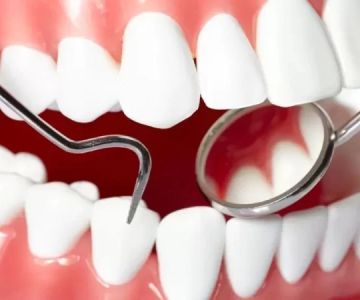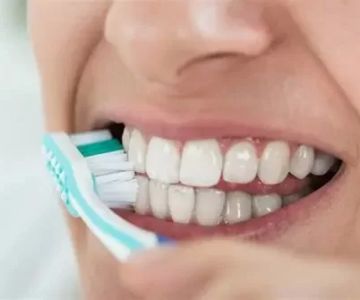How to Know if You Have Good Oral Hygiene
When it comes to maintaining a healthy smile, oral hygiene is key. But how can you tell if you're doing it right? Good oral hygiene doesn’t just mean brushing twice a day—it encompasses a variety of habits that ensure your teeth and gums remain healthy. In this article, I will share with you how to assess your oral hygiene, the signs of good oral care, and some tips to keep your dental health in top shape.
As someone who has always been mindful of my oral health, I’ve learned over the years that keeping your mouth in good condition isn’t just about the obvious—like brushing your teeth regularly. It’s about understanding the little signs that indicate you’re on the right track and knowing when you might need to adjust your routine. Let’s dive into the details to help you figure out if your oral hygiene is truly up to standard.
1. Your Gums Are Healthy and Pink
One of the first things to check when evaluating your oral hygiene is the condition of your gums. Healthy gums should be pink and firm, not red or swollen. If your gums are bleeding when you brush or floss, it could be a sign of gum disease, which can be prevented with good oral hygiene habits.
Swollen, tender, or bleeding gums are a clear indication that something is wrong, and if you notice this happening consistently, it may be time to consult with a dentist. Gums that are not healthy can be a breeding ground for bacteria, leading to plaque buildup and even tooth loss if not properly addressed.
Additionally, a good indicator of healthy gums is their response to regular brushing and flossing. If you can gently brush or floss without causing irritation, then your gums are in great shape. Keeping your gums healthy is crucial because they support the structure of your teeth and protect against bacterial infections.
2. Fresh Breath All Day
While bad breath (also known as halitosis) is common after eating certain foods like garlic or onions, persistent bad breath could indicate poor oral hygiene. When your breath smells fresh throughout the day, it’s a sign that you're removing food particles and plaque buildup regularly.
If you find that your breath smells foul even after brushing, it may be due to the accumulation of bacteria in your mouth, which can lead to issues like tooth decay or gum disease. Good oral hygiene practices, such as brushing your tongue, flossing regularly, and using mouthwash, can help keep your breath fresh and your mouth free of harmful bacteria.
3. Your Teeth Are Clean and Plaque-Free
Another key sign of good oral hygiene is the appearance and feel of your teeth. When you brush your teeth, they should feel smooth and clean. If you run your tongue along your teeth and feel any roughness or stickiness, that’s plaque buildup.
Plaque is a sticky film of bacteria that can form on your teeth. If not removed through regular brushing and flossing, plaque can harden into tartar, which can only be removed by a dentist. Regular brushing, at least twice a day with fluoride toothpaste, is one of the most important habits to maintain a clean, plaque-free smile.
If you notice that your teeth are stained or feel grimy despite brushing, it could be an indication that you're not cleaning them properly, or you're not brushing often enough. Investing in a good toothbrush, perhaps one with soft bristles, and using mouthwash can help keep your teeth and mouth feeling clean.
4. No Tooth Sensitivity or Pain
When you have good oral hygiene, your teeth should not be overly sensitive to hot or cold foods. While occasional sensitivity can occur, especially after a recent dental procedure, consistent pain or sensitivity could indicate deeper issues, such as cavities or receding gums.
Good oral hygiene can help prevent these problems by keeping your enamel strong and your gums healthy. If you notice tooth sensitivity when eating cold foods, sipping hot beverages, or even brushing, it's a sign that your enamel may be wearing down or that there could be other issues that require dental attention.
Keeping a consistent brushing and flossing schedule, as well as using desensitizing toothpaste, can help reduce sensitivity and keep your teeth healthy in the long term.
5. Regular Dental Checkups
One of the best ways to know if you're maintaining good oral hygiene is to schedule regular checkups with your dentist. Dentists can identify any problems in their early stages before they become major issues. During a routine visit, your dentist will perform a professional cleaning to remove any plaque and tartar that your daily brushing might have missed, as well as check for any signs of decay, gum disease, or oral cancer.
Even if you’re diligent about brushing and flossing, it’s still important to have professional exams and cleanings. A dentist can spot things that are invisible to the untrained eye and provide you with the right recommendations for maintaining your oral health.
6. Healthy Diet and Lifestyle Choices
Good oral hygiene isn’t just about how often you brush or floss. Your diet and lifestyle play a significant role in your overall oral health. A balanced diet rich in fruits, vegetables, and low in sugary foods helps promote strong teeth and healthy gums. Additionally, drinking plenty of water throughout the day helps rinse away food particles and bacteria.
Habits like smoking and excessive alcohol consumption can harm your teeth and gums, making it harder to maintain good oral hygiene. Smoking, for instance, can contribute to gum disease and tooth staining. Limiting these behaviors and choosing a healthier lifestyle can significantly improve your oral hygiene and overall health.
7. Staying Consistent with Your Oral Hygiene Routine
Ultimately, maintaining good oral hygiene is all about consistency. Brushing twice a day, flossing daily, and visiting your dentist regularly are all part of a successful oral care routine. Being proactive and diligent about your oral hygiene can help you avoid costly dental procedures down the road.
It’s important to make brushing and flossing a habit that you stick to every day. This means brushing for at least two minutes each time, using fluoride toothpaste, and making sure you floss properly between each tooth. Using mouthwash can help kill bacteria, but it should never replace brushing and flossing.







 SoCO Smiles Orthodontics4.0 (187 review)
SoCO Smiles Orthodontics4.0 (187 review) Fioritto Family Dental4.0 (173 review)
Fioritto Family Dental4.0 (173 review) Hillcrest Dental Group, P.A.4.0 (826 review)
Hillcrest Dental Group, P.A.4.0 (826 review) Rush Family Dental5.0 (161 review)
Rush Family Dental5.0 (161 review) Dr. Eilis Purath0.0 (0 review)
Dr. Eilis Purath0.0 (0 review) Think Better Life - Orofacial Pain, TMJ & Sleep Disorder Solutions Chicago4.0 (11 review)
Think Better Life - Orofacial Pain, TMJ & Sleep Disorder Solutions Chicago4.0 (11 review) The Importance of Oral Health Education During Pregnancy for a Healthy Pregnancy
The Importance of Oral Health Education During Pregnancy for a Healthy Pregnancy Best Tips for Brushing Your Teeth Properly for Healthy Gums: Essential Techniques for Oral Health
Best Tips for Brushing Your Teeth Properly for Healthy Gums: Essential Techniques for Oral Health Why Skipping Dental Checkups Can Lead to Bigger Oral Health Problems
Why Skipping Dental Checkups Can Lead to Bigger Oral Health Problems Advantages of Porcelain Dental Restorations
Advantages of Porcelain Dental Restorations How Can Diabetes Cause Tooth and Gum Problems? Preventing and Managing Oral Health Issues
How Can Diabetes Cause Tooth and Gum Problems? Preventing and Managing Oral Health Issues Healthy Habits for Promoting Good Oral Health and Hygiene: Tips for a Healthy Smile
Healthy Habits for Promoting Good Oral Health and Hygiene: Tips for a Healthy Smile